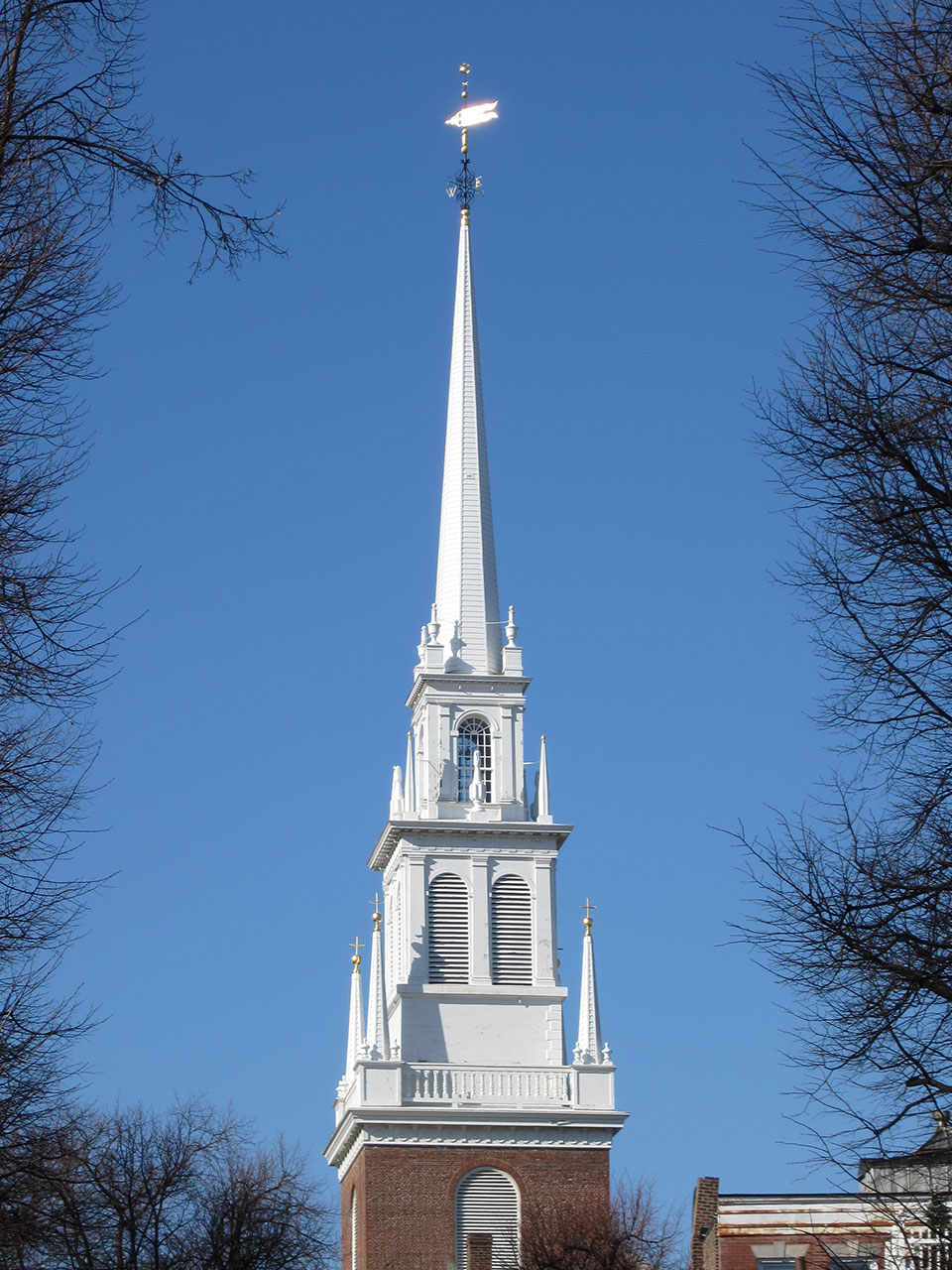
History
Old North's Divided Congregation
In the heart of Boston's North End, Christ Church, also known as "Old North," has a rich history that dates back to the Revolutionary era. Although it now stands as a symbol of patriot defiance, the story of Old North reflects the deepening divisions between the "Friends of the Government" and the "Sons of Liberty" in Revolutionary Boston.
Built in 1723, Old North was an Anglican church, representing the official Church of England, rather than a Congregational or Puritan church. Despite the Charter of 1692, which called for greater religious tolerance in Massachusetts, many Bostonians were still wary of the influence of the official Church of England. However, the elegance of Old North, with its stained glass windows, expensive pews, and Georgian architecture, drew the attention of wealthy merchants, government officials, and skilled tradesmen who sought a contrast to the simplicity of Congregational churches like Old South Meeting House.
Interestingly, Old North differed from other Anglican parishes in New England. While many Anglican churches were seen as "Tory" or "Loyalist" congregations, Christ Church was divided. Political and financial disputes plagued the church, resulting in the resignation of the church's minister, Rev. Mather Byles Jr., a vocal Loyalist, on April 18, 1775. It was on that same fateful night that Robert Newman, the church's sexton, and John Pulling, a vestryman, entered the sanctuary to aid the Patriot cause.
Read more: How to Set Up Color-Changing LED Strip Lights in your Room
The Signal
According to Paul Revere's account, on the night of April 18, 1775, he enlisted the help of his friend John Pulling to fulfill an urgent request. Pulling, along with Robert Newman, secretly arranged a signal for Revere. The Patriots devised a system: one lantern if British regular troops march out of Boston by land, and two lanterns if they depart by boats across the river. This signal was crucial for Revere to quickly and reliably send a warning outside the confines of Boston. After conferring with Pulling, Revere made his way to Charlestown, rowing past a British warship, and avoiding arrest before he could even mount his horse.
After the lanterns were briefly displayed, Pulling fled Boston to escape arrest. Newman, living with British soldiers as boarders at his home, had to climb through his bedroom window to evade detection. The following day, British soldiers interrogated Newman but eventually released him. By the end of that eventful day, April 19, 1775, a heated battle had unfolded along twenty miles of Massachusetts countryside. Thanks in part to the signals that adorned the top of Christ Church, the Revolutionary War had begun.
Read more: LED Lighting and Kitchen Shadows: How LED lighting can help eliminate shadows in your kitchen
Frequently Asked Questions
1. What is the significance of Old North Church during the Revolutionary era?
Old North Church played a significant role in the beginnings of the American Revolution. It served as a symbol of the deepening divisions between the "Friends of the Government" and "Sons of Liberty" in Revolutionary Boston. The church's lanterns, which signaled the movement of British troops, played a vital role in Paul Revere's famous ride and the start of the Revolutionary War.
2. What distinguishes Old North Church from other Anglican parishes?
Unlike many Anglican churches, Old North Church was divided rather than a staunchly "Tory" or "Loyalist" congregation. Political and financial disputes within the church led to the resignation of its minister, Rev. Mather Byles Jr., who was a vocal Loyalist.
3. How did the signal system work during Paul Revere's ride?
Paul Revere and his friend John Pulling devised a signal system with one lantern meaning British troops were marching out of Boston by land and two lanterns indicating their departure by boats across the river. This quick and reliable means of communication allowed Revere to warn the Patriots outside Boston about the imminent arrival of British troops.
For more information about the history and legacy of the Old North Church, visit their website.




